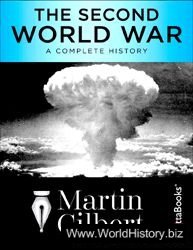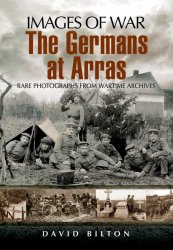Bon Accord is set up at Aberdeen by John M. W. Begg and Brian W. Davis in September 1992. With Begg as president and Davis as CEO, 10 other employees are hired and 1 Shorts 360-100 is acquired. Revenue passenger and cargo flights commence on November 7 in support of the North Sea oil industry.
Operations continue apace in 1993-1994, with ad hoc charters provided to a variety of destinations in northern Europe, occasionally on behalf of major airlines.
Although a second Shorts 360-100 is ordered, the company encounters financial difficulties and is forced to shut its doors in December 1995 before it can be delivered.
BON AIR (BONAIR HAVACILIK, A. O.): Orman Sokak 10, TR-34810, Florya Istanbul, Turkey; Phone 90 (212) 663-1829; Fax 90 (212) 574-0147; Http://www. bonair. com. tr; Year Founded 1996. Part of Airgroup Havacilik, Bon Air is set up at Istanbul in 1996 to offer passenger charter services to domestic and regional destinations. Operations begin and continue with a fleet that includes 1 each Cessna Citation I, C-421, C-172 Skyhawk, and Beech King Air 90.
BONANZA AEROLINEAS, S. A. de C. V.: Merida Mexico; Year Founded 1997. BA is established at Merida during the summer of 1997. A British Aerospace BAe Jetstream 31 is purchased from BAe Asset Management Turboprop and is employed to inaugurate and continue scheduled passenger services to Chetumal, Palenque, Tuxla, Villaher-mosa, and Belize City.
BONANZAAIR LINES: United States (1945-1968). Former USN officer Edmund Converse, one-time charter operator Charles Keene, and June Simon establish Bonanza Air Services at Sky Haven Airport at Las Vegas early in June 1945. Selling tickets from a counter in the lobby of the El Rancho Vegas Hotel and Casino, the small carrier is able to attract customers, which are flown to neighboring Nevada towns in the company’s single Cessna Skymaster, piloted by Vice President/Chief Pilot Richard Hall. The firm is reformed and incorporated as the nonsched-uled carrier Bonanza Air Lines on December 31.
Early in 1946, the new airline is awarded a contract to ferry merchant marine sailors from California to New Jersey. To operate this signifi-cantly-larger enterprise, Bonanza leases a Douglas C-47 (military DC-3) from the War Assets Administration in March; it also relocates to Alamo Field. The first merchant marine C-47 service is flown by Vice President Hall at the beginning of April. During the month, he is also kept busy hauling items for merchants who might ordinarily ship via the railroads, which are out on strike. Much of this extra flying is concentrated on charters from Las Vegas to Reno.
Following the conclusion of the railroad strike, a decision is taken to further enhance company business by flying as a scheduled intrastate carrier. The C-47 is reconfigured to civil DC-3 standard and, on August 6, thrice-daily Las Vegas-Reno return service is inaugurated. Also during the summer, the fleet is enhanced by the addition of 2 Piper Cubs and 3 Cessna T-50 Bobcats. Several additional staff, flyers, and mechanics are hired, including Vice President/Secretary Florence Murphy, who is the first female commercial pilot certified by the State of Nevada.
During the fall, the airline moves to the inactive McCarran Field, now Nellis AFB. It is at this time that Keene and Simon sell out to Hall, who becomes president under Chairman Converse, and begins to emphasize scheduled service over the Reno route.
Because passenger load-levels have not been impressive, Bonanza is forced to announce, during the spring of 1947, that it is curtailing the number of flights offered. The Las Vegas Chamber of Commerce provides the funds needed for a new marketing campaign, “Route of the Gold Strikes,” and ridership improves. During the summer and fall, new stops are added at Hawthorne and Tonopah.
Alamo Field again becomes company headquarters in 1948. The airport there is renamed McCarran Field (later McCarran International Airport), while the previous McCarran Field is activated as Nellis AFB. During the year, a DC-3 is purchased from Western Air Lines and the workforce is increased.
Certified a “feeder airline” by the Civil Aeronautics Board on June 15, 1949, the local service company launches scheduled Douglas DC-3 operations on December 19 over a Reno-Phoenix route transferred from Trans-Continental and Western Airlines (TWA). Stops are made at Carson City, Hawthorne, Tonopah, Las Vegas, Boulder City, Kingman, and Prescott.
During the first half of 1950, the company’s staff puts up a hangar at the McCarran base; the war-surplus edifice is ready to house the fleet by June. The CAB now also approves the company’s application to fly mail over its multistop route. Plans for expansion are made in 1951 and arrangements made to take on new routes.
The first of several new Western routes is awarded by the CAB to Bonanza in July 1952. DC-3s begin flying from Phoenix to Los Angeles via Ajo, Yuma, Blythe, El Centro, San Diego, Oceanside, and Santa Ana-Laguna Beach. Service is maintained over these extended segments in 1953-1954.
President Dwight Eisenhower approves a measure in May 1955 that grants permanent certification to the 13 nonscheduled feeder carriers, including Bonanza, which are now renamed “local service airlines.” During the year, scheduled roundtrips are initiated from Phoenix to Los Angeles via Blythe, Palm Springs-Indio, Riverside, and Ontario. Another route is also soon awarded, from Phoenix to Los Angeles via Apple Valley, Riverside, and Ontario.
During these middle years of the 1950s, several more DC-3s are acquired, including one from United Air Lines on December 18, 1956. In 1957 the CAB supports legislation that results in the Government Guaranty Loan Act. Bonanza is the first to seek and receive equipment financing support under the new law and quickly places orders for 6 Fokker F-27As, built by Fairchild under license to the Dutch manufacturer Fokker. Direct Phoenix-Salt Lake City authority is received early in 1958, along with a multistop Las Vegas-Los Angeles route.
Branding them “Silver Darts”(rather than the Fokker name Friendship) the company takes delivery of its first two F-27As on January 16 and February 25, 1959, respectively. These enter revenue service on March 29 over the Las Vegas-Los Angeles route.
A third F-27A arrives on August 17, as does a fourth on September 17, and a fifth on October 14. With the retirement of the carrier’s last
DC-3, the company, on November 1, 1960, becomes the first all turbine-powered airline in the Western Hemisphere.
With CAB approval, Bonanza, in 1961, takes over the lucrative nonstop Los Angeles-Las Vegas route previously flown by Western Airlines, United Air Lines, and Trans World Airlines (TWA). Another F-27A arrives on June 2, with another delivered shortly thereafter.
The eighth Fairchild is received on May 29, 1962. In October, the company orders 3 1-11-206s from British Aircraft Corporation. Reacting to the foreign request, the CAB, in March 1963, refuses to guarantee a U. S. government loan to cover the purchase. Particularly since it is already spending $5.4 million to underwrite acquisition of the Fairchild F-27As.
Bowing to the regulator’s demand, the company cancels the British order. On July 10, with CAB blessing, Bonanza places orders for 3 Douglas DC-9-11s.
By 1964, airline employment has risen to 760 and the fleet includes 13 aircraft. Orders are placed for 2 additional Fokker F-27As and financing of $10 million is arranged, allowing completion of the outstanding orders for 3 DC-9-11s.
On February 12, an F-27A with 34 aboard overshoots its landing at Las Vegas and crashes; injuries are slight. The CAB grants the company authority to initiate direct Santa Ana to Las Vegas service. In addition, an application is made for nonstop Las Vegas-Grand Canyon flights.
Flight 114, an F-27A with 29 aboard, disappears in a snowstorm on November 15 during a flight from Phoenix to Las Vegas; the wreckage is found on a mountain 9 mi. S of McCarran Field the next day and there are no survivors. It will later be determined that the navigation charts in use that fatal day were faulty.
Enplanements climb 16% to 620,497. Revenues jump 10% to $14 million and net profits of $677,166 are announced.
The workforce in 1965 is 837 and the fleet includes 14 Fokker F-27As. Orders are outstanding for 3 DC-9-11s. Although Bonanza has the fewest number of airliners of any local service carrier, it owns the most turboprops. Two of these are damaged in turbulence incidents on March 28 and April 1 respectively, the first over Prescott, Arizona, and the second southeast of Julian, California. Another F-27F, with two crew, groundloops during takeoff from McCarran Field, Las Vegas, on April 16 for a training flight and crashes; there are no fatalities, but the turboprop is badly damaged.
Nonstop Santa Ana to Las Vegas service is inaugurated. Flights operated to the Grand Canyon from Phoenix and Salt Lake City are transferred to the new Grand Canyon National Park Airport. With an average of 150.3 miles, the company’s stages are the longest in its classification.
An F-27A with 17 aboard suffers a landing gear collapse and is damaged during landing at Yuma, Arizona, on December 8. The first DC-910 is delivered on December 9; it will spend the next two months in practice service. A shift of personnel and equipment to a new $3-million administrative and maintenance facility at Phoenix is 50% complete by December 31.
Passenger boardings for the year jump 8% to 668,662. Revenues increase by 3% to $14.51 million.
The second DC-9-11 is delivered in January 1966. Bonanza is the first local service airline to launch DC-9 service when its premier machine begins flying the Los Angeles-Las Vegas route on March 1. Three more jetliners join the fleet before year’s end.
With CAB Chairman Charles Murphy officiating, a new headquarters and maintenance facility, supported by the city of Phoenix, is opened at Sky Harbor Airport on June 25.
Enplanements for the year total 859,275. Revenues total $18,011,800.
The workforce in 1967 totals 1,043 and the fleet includes 5 DC-9-11s, now nicknamed “Fun Jets,” and 12 F-27As. Orders are placed for 2 DC-9-30s. Late in the year, the company agrees to a three-way merger with Pacific Air Lines and West Coast Airlines; the three file a joint application with the CAB seeking approval.
Customer bookings advance 14.5% to pass the million mark in annual boardings for the first time (1,005,000) and cargo traffic is up 10.15%.
Revenues are up by 15.7% to $20,839,600 and a net profit of $529,700 is posted.
Early in 1968 a sixth DC-9-11 is acquired, along with CAB approval to operate to Tucson and several destinations in Mexico. On April 17, the company loses its identity as it is merged with West Coast Airlines and Pacific Air Lines to form Air West, a predecessor of Republic Airlines.




 World History
World History









